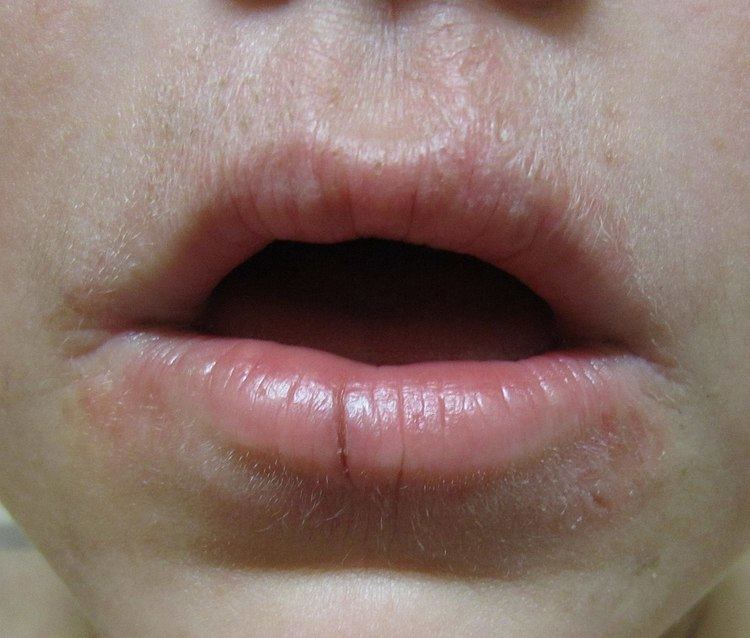Specialty dermatology ICD-9-CM 695.3 MedlinePlus 001455 | ICD-10 L71.0 DiseasesDB 31371 eMedicine derm/321 | |
 | ||
Perioral dermatitis (also called periorificial dermatitis) is skin disease characterised by multiple small (1–2 mm) papules, pustules and vesicles which are localized to the skin around the mouth, around the nostrils, or around the eyes. It most commonly affects women between the ages of 20 and 45 years, but may also affect children, men and the elderly. It is not uncommon, and has a tendency to recur in individuals who have had it once.
Contents
Signs and symptoms
Perioral dermatitis may be asymptomatic or may be associated with a burning, stinging sensation in the affected areas.
When periorbital dermatitis is found in otherwise healthy prepubertal children, with a profusion of grouped papules on the perioral, periocular, and perinasal areas, the condition is referred to as Granulomatous perioral dermatitis.
Causes
The cause of perioral dermatitis is unknown. It often happens after the use of topical steroid on the face.
There are many potential causes of perioral dermatitis including chewing gum, certain medications, hormone changes, and autoimmune diseases. Lip licking, lip chewing, sucking, and allergies to ingredients in certain dental products have also been reported as causes. Balsam of Peru and cinnamic aldehyde (both often used as flavoring in food, lipstick, mouthwash, and toothpaste), rosin in some chewing gum, cinnamon, and peppermint are other potential allergens that may cause perioral dermatitis.
Diagnosis
A diagnosis of perioral dermatitis is typically made based on the characteristics of the rash. A skin biopsy is usually not required to make the diagnosis but can be helpful to rule out other skin diseases which may resemble perioral dermatitis.
Other skin diseases which may resemble perioral dermatitis include:
Treatment
Perioral dermatitis will usually resolve within a few months without medication. Topical corticosteroids should be stopped entirely if possible.
A number of medications speed up recovery including: tetracycline, doxycycline, and erythromycin. Erythromycin may be used as a cream. Metronidazole does not appear to be as good as tetracycline.
